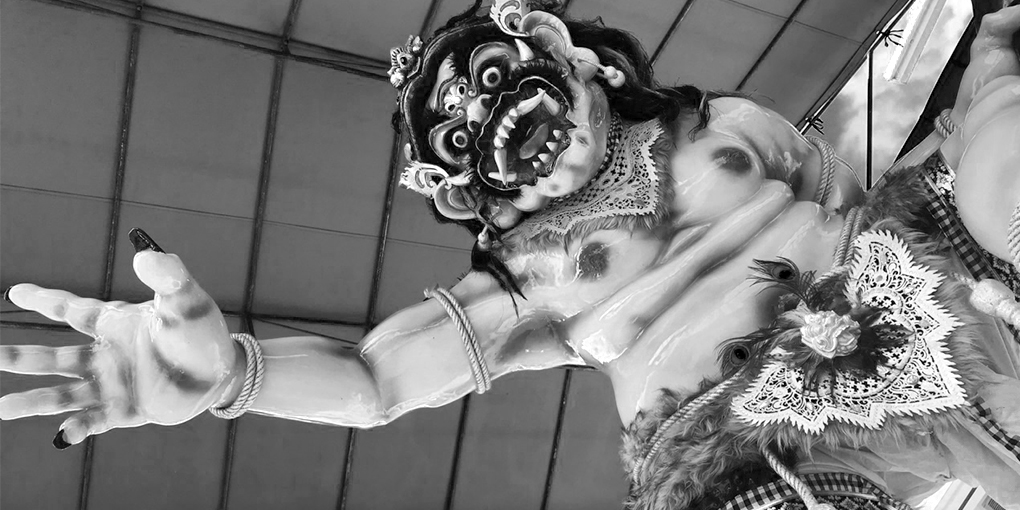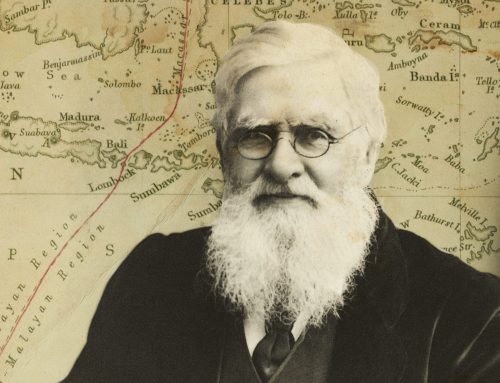Nyepi is the first day of the Saka lunar calendar, a sacred occasion in Bali when people stay indoors for quiet reflection. For many visitors in Bali during this time of year, the message is strong and simple, for respecting ‘Silent Day’ is mandatory: stay in, turn off the lights and be quiet. From dawn until dawn, the island completely shuts down, including the airport. Only pecalang (neighbourhood security) go out in public, whilst everyone else takes time for personal reflection at home.
What more is there to know about the annual Nyepi holy day in Bali, and what do the papier-mâché monsters in the streets have to do with it? Find out more about this unique form of Bali art.
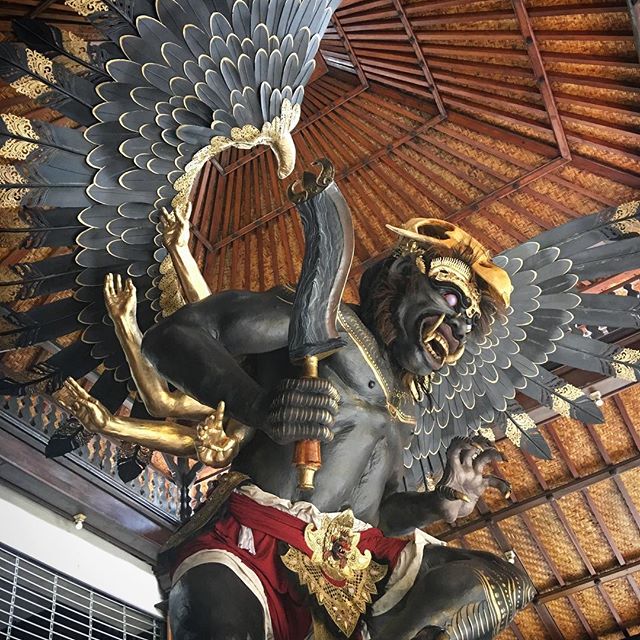
Bali Art
Arts are integral to Balinese culture, and the Balinese have a long history as accomplished woodworkers, stone sculptors, gold- and silversmiths, and textile- and basket-weavers, as well as being ingenious horticulturalists. Balinese artisan crafts, ceremonial customs, daily offerings, performance arts, masks, costumes, adornments and agricultural traditions are all ways of life which honour the values of Balinese Hindu ideology; at the crux a divine balance between people, God and nature.
Balinese customs preceding Nyepi are all about maintaining this trinity, known as the Tri Hita Karana, by cleansing, warding off all evil forces and giving selfless offerings before the start of the new year.
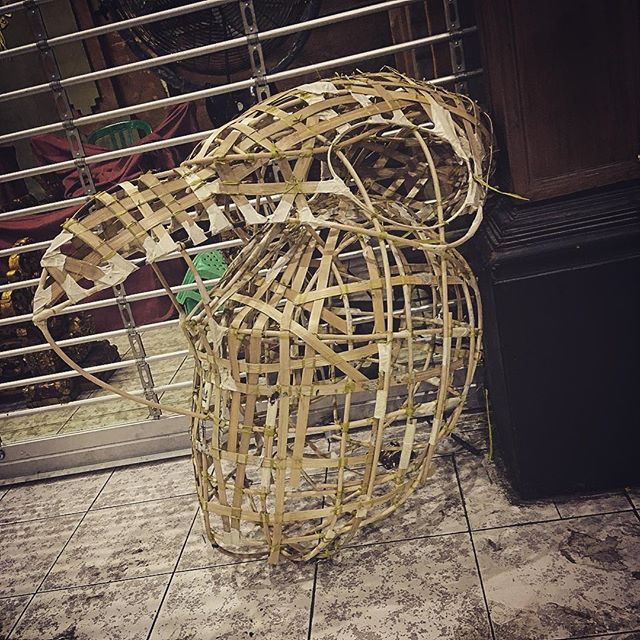
Ogoh-Ogoh Monster Statues
The great task of ridding the island of a year’s worth of evils is taken care of by giant ogoh-ogoh statues of mythological witches, grotesque demons or modern anti-heroes.
Just one of the many essential rituals surrounding Nyepi, the ogoh-ogoh are paraded around by their creators in raucous processions late into the night on the eve of Nyepi. They scare away or encapsulate bad entities, then get set on fire at the cemetery to burn to complete non-existence.

Despite their short lifespans, ogoh-ogoh can be elaborate monstrosities with impressive construction and attention to detail. A popular and visually stunning trend is to create artworks which appear to hover in thin air or connect multiple figures in a dynamic pose. In each of Bali’s thousands of banjar (community organizations), young adults begin making an ogoh-ogoh weeks or even months in advance of Nyepi.
Traditions
Many adults can’t resist joining in this artistic tradition. Local Bali tattoo artist and graphic designer Putu Marmar Herayukti is one of them. For the ogoh-ogoh parade preceding Hari Raya Nyepi 1940 (17 March 2018), Marmar conceived an ogoh-ogoh concept for his banjar well in advance and started making it in February.
The ogoh-ogoh for Banjar Gemeh in Denpasar looks like a black crow “paksi ireng” and represents an embodiment of Bhuta Kala. In Balinese Hindu mythology, Bhuta (nature) Kala (time) manifests as darkness or evil when the space and time in which we live is misaligned. From stories of Bhuta Kala, people can learn ways to purify the mind and manage their role in the balance of people, divinity and the environment aligned in space and time (that’s what Nyepi is all about).
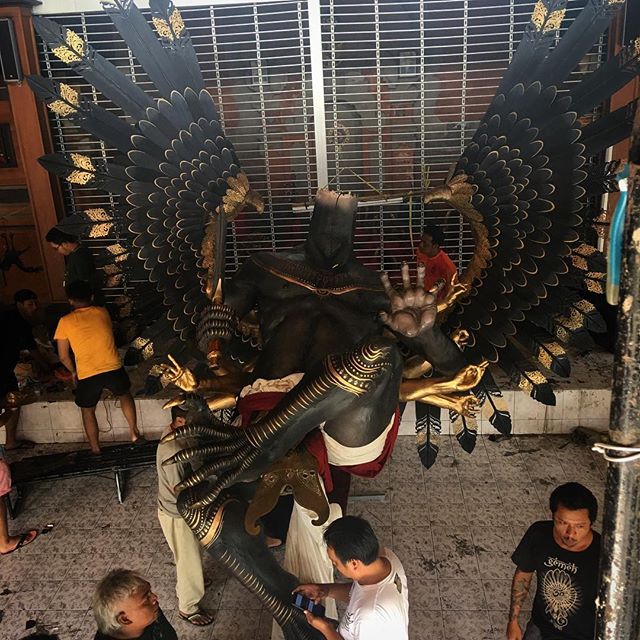
This Bali art of making monsters isn’t all about restoring natural harmony to the land.
It also builds communities, teaches the traditional craft of bamboo weaving and promotes creativity and problem-solving. Friendly competition arises between banjar to have the most impressive ogoh-ogoh, and formal contests take place as well.
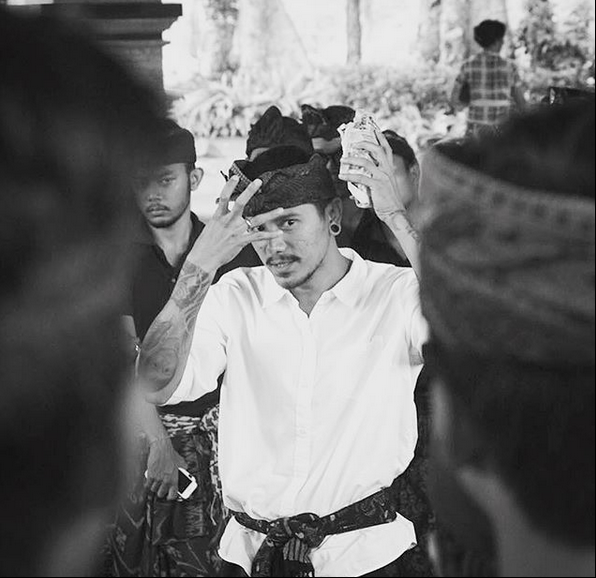
Art is not a competition, but it is a beautiful form of communication that makes people interested in listening to it. / Seni bukan kompetisi, tetapi seni itu bentuk sarana komunikasi yang indah yang bikin orang-orang tertarik untuk mendengarkannya. – Putu Marmar Herayukti
Within the past few years, Marmar has gained a level of celebrity for his ogoh-ogoh-making, a position which he embraces by hosting workshops for monster-making in various banjar and advocating the importance of sustainable artwork in Bali (no burning Styrofoam monsters, please).
Nyepi is Balinese version of Earth Hour, but instead of just an hour, they do it for 24 hours straight! Experience this unique and authentic experience in Bali and explore more of their culture.
Images shared publicly by the artist on his Instagram profile.

